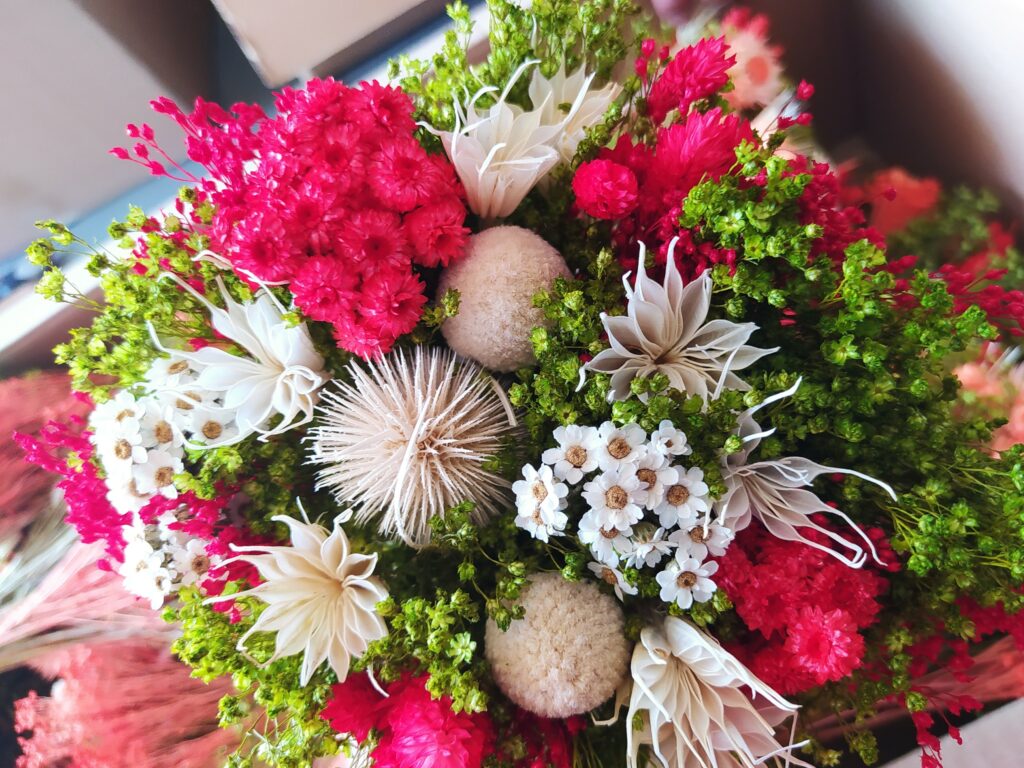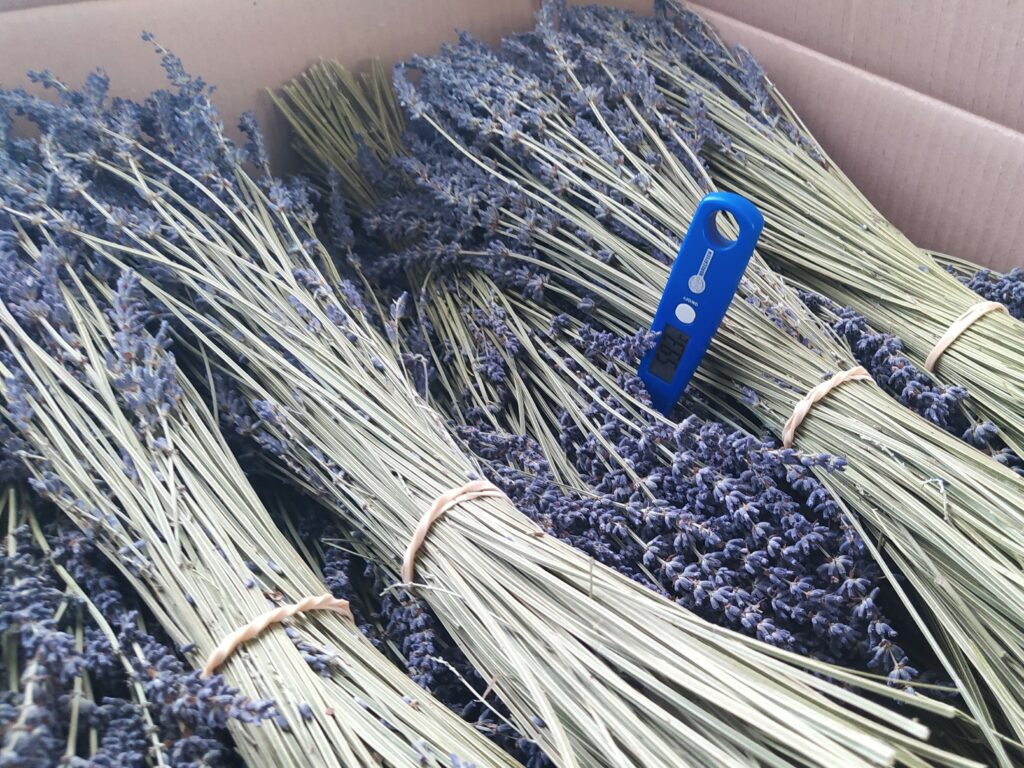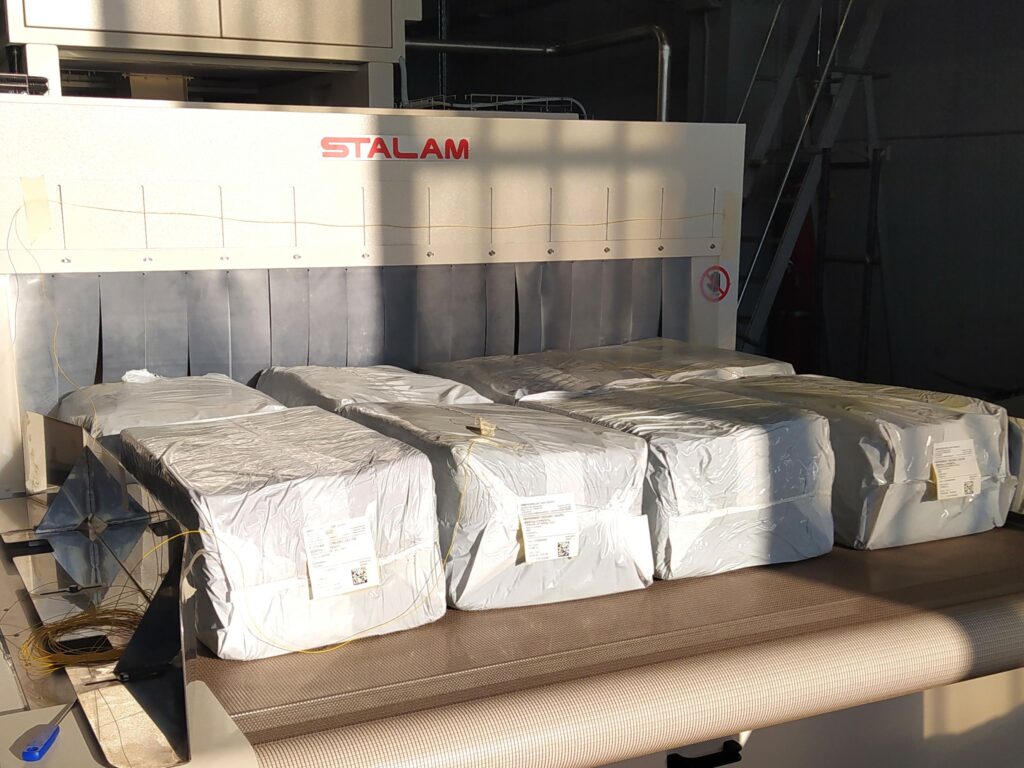
Diemme Fiori is an italian company based in Liguria, established in 1991 by the Di Massa brothers, leader in the sector of processing and exporting dried fronds and flowers, dealing with a wide range of varieties and packaging methods. The expertise and manual skills of women, who represent over 50% of the workforce (Diemme is among the first few companies in the Imperia area with a “gender equality” certification), contribute significantly to the company’s success.
Driven by a passion for excellence – as a proof, the company is ISO 28000 certified – Diemme has always sought high quality raw materials and processes that further improve the qualitative aspects of its products.
In the pursuance of its vision, Diemme Fiori has started an in-depth activity of selection, testing and validation of solutions that could overcome the problem of the presence of insects and their eggs in the packages, while maintaining unchanged the visual and “aromatic” qualities of the flowers, which are exported to the most qualified world markets.


Stalam, which has been offering for over 40 years to the world markets the widest and most advanced range of industrial Radio Frequency drying and thermal processing equipment – including sanitisation, has taken up the challenge of Diemme Fiori, studying and designing a customized system for the continuous disinfestation of flowers.
After an initial phase of defining the customer’s specific needs, Stalam provided experimental support through its R&D Laboratory, where multiple RF treatment tests were carried out on a wide range of flowers and fronds contaminated with weed samples provided by the Regional Institute for the Floriculture of Sanremo. The tests were carried out on different type packages (envelopes, bags and cardboard boxes) and sizes.
The Radio Frequency treatment, being an endogenous process in which heat is generated directly inside the product mass subjected to the electromagnetic field, has allowed the rapid and uniform temperature rise of the flowers directly inside the packages, regardless of the packaging type and size.
The RF treatment raised the temperature from around 20°C to around 60-65°C in a few minutes, confirming itself as an effective method for the disinfestation of the flowers, also allowing for a light overall sanitisation.


After the RF treatment, the samples were sent to analysis laboratories to verify that there were no eggs hatching and that the flowers had maintained the best quality characteristics.
Diemme Fiori, given the excellent results achieved, provided Stalam with the necessary details on its production needs and on all the references to be processed; Stalam then proceeded to design and build a customized equipment, based on the SANILEAF+ series, having the most suitable characteristics in terms of production capacity, size and optimization of operating costs.
The range of flowers that are successfully treated in the SANILEAF+ equipment is very wide. Some examples are shown in the below table, detailing the product, the type of packaging and the weight of individual packages:
| Product | Packaging | Weight (Kg) |
| Mint in foliage – bales | Compressed bale | 15 |
| Mint in foliage – bags | Bag | 25 |
| Lavender sifted into foliage | Bag | 25 |
| Lavender in bunches (40 bunches/carton) | Box | 4 |
| Lavender in 10g sacks | Box | 8 |
| Lavender in foliage | Bag | 25 |
| Verbena in foliage | Compressed bale | 12 |
| Bouquet of mixed and colored flowers in bunches (20 bunches/carton) | Box | 2 |
| Chemically treated oak flowers in bunches (30 bunches/carton) | Box | 5,5 |


Leonardo Papone, DIEMME FIORI’s project leader, says: “Our main task was the rapid and efficient sanitization of lavander bunch boxes, reducing energy consumption as much as possible. Over the time, the objectives have become even more demanding and, thanks to the collaboration with the Stalam team, we have expanded our range of applications and we sanitized various types of products packaged in different ways, such as 25 kg bags, as well as other ornamental dry products in different package sizes.” Papone then specifies: “Through various tests carried out with Stalam engineers, we have exploited the flexibility and adaptability of the Radio Frequency system to develop the ideal “recipe” for practically every product in our warehouse. Once the procedure was established, we were practically certain of the entomological sanitization of the product. And to guarantee maximum quality, we conducted detailed analyzes on the chemical composition of each treated product, monitoring any changes during the heating and cooling process: we only found negligible variations compared to our reference standards”.
Paolo Di Massa, CEO and owner of Diemme Fiori, confirms: “Our commitment for the future is to make more uniform the raw material entering the RF equipment, in order to obtain even more consistent results for each reference. Given the effectiveness of the RF equipment, we are focusing our efforts on the complete sanitization of all raw materials stored in our production site, in order to guarantee an environment free of external parasites”.
Michele Bicego, Stalam’s R&D innovative applications manager, states: “In the development of this project, our previous industrial experience in similar applications was of great help, such as the sanitisation of medicinal herbs and the disinfestation of grains for use in the food industry, all products that require effective, but, at the same time, delicate treatment on the product, in order to best preserve its chemical-physical, functional and sensorial characteristics”.
And Roberto Cian Seren, business development advisor of Stalam, states: “We are extremely satisfied and flattered by the positive results obtained from the collaboration with Diemme Fiori, that we thank for the great motivation and professionalism with which it supported and validated our work, as well as for the trust it has granted us with the purchase of a brand new SANILEAF+ equipment“.
To sum up, the project and the synergistic collaboration between the two companies were a great success for both. The ability of Radio Frequency to disinfest and sanitize all products subjected to treatment in an extremely effective and efficient way, without altering their qualitative characteristics, has also been confirmed on these substrates.
Specifically, the following benefits achievable with the Radio Frequency treatment on dried flowers and other fronds have been scientifically proven:
- It deactivates and/or kills all eggs, larvae, pupae and pest insects
- It allows for a better aesthetic quality of flowers compared to traditional disinfestation treatments
- It allows for a longer shelf life (preservation) of dried flowers and essences
- The treatment can be applied to a large variety of products, either in-bulk or packaged (in plastic, paper or bags and/or in boxes, even very bulky ones).
Last but not least, it should be kept in mind that the RF technology achieves these important results by avoiding the use of potentially harmful chemical products and without any polluting dispersion into the environment, as well as using renewable energy sources for its operation: therefore, this is an absolutely “green technology” and respectful of the healthiness of both the products and the environment.

